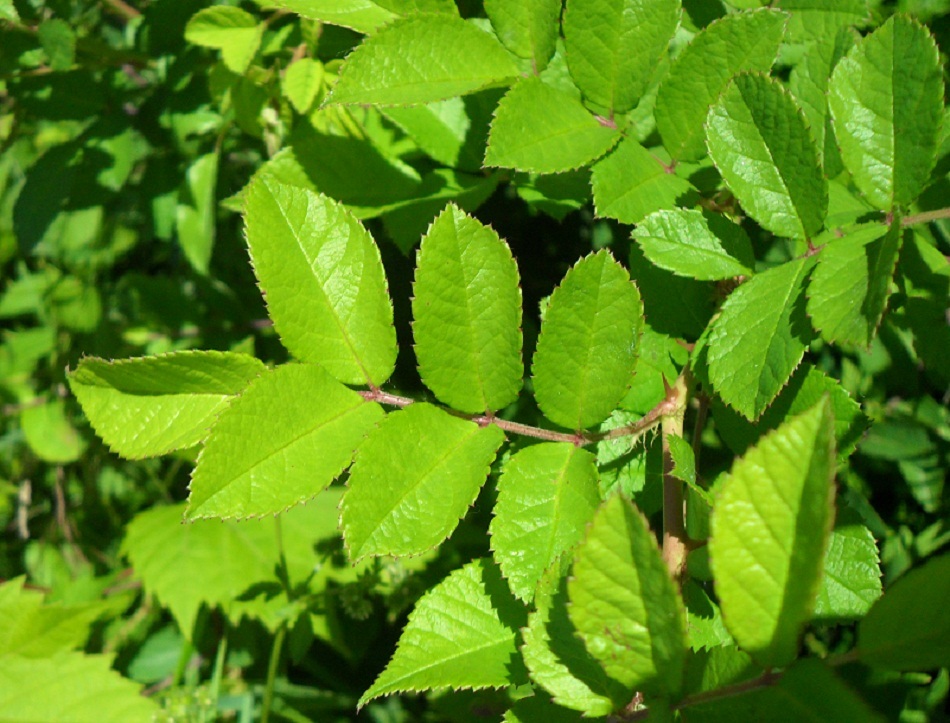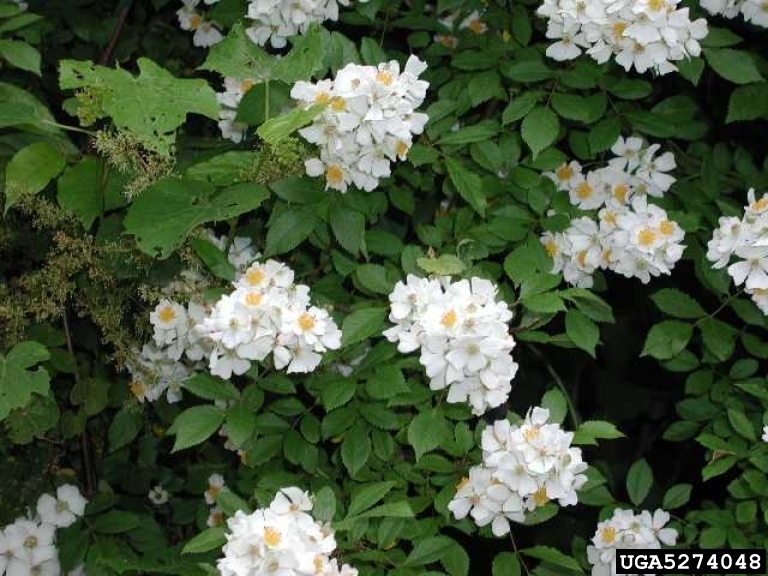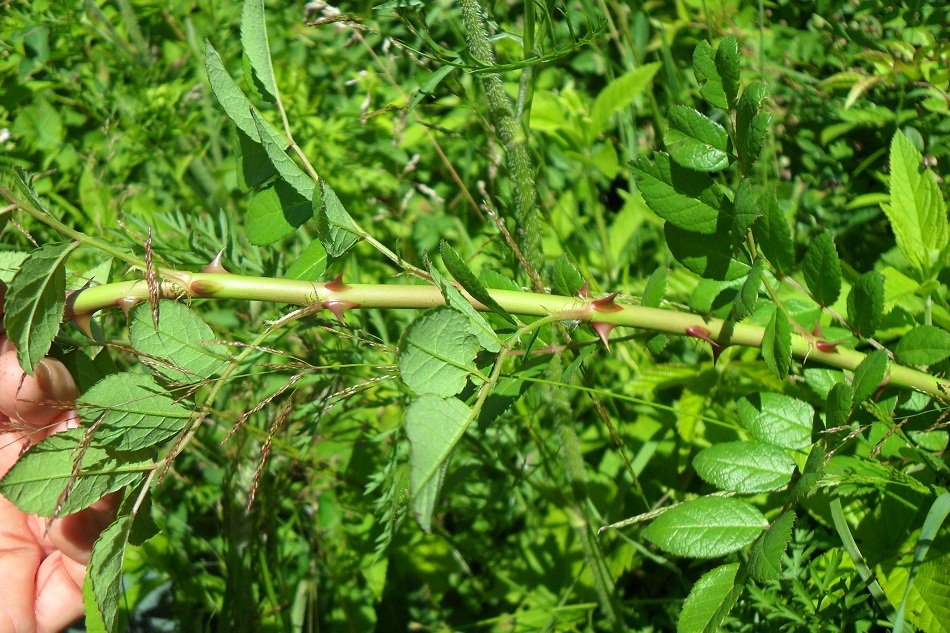|
Having trouble viewing this email? View it as a Web page.
August 29, 2022
September Weed of the Month: Multiflora Rose
Julia Dellick, Minnesota Department of Agriculture
In 1866, multiflora rose (Rosa multiflora) was brought to the United States from its native range in Japan, Korea, and eastern China to be used as a rootstock for ornamental roses. Starting in the 1930s, multiflora rose was widely planted in the United States for erosion control, wildlife habitat, and ornamental purposes. Because of its ability to establish and thrive in a variety of disturbed and natural habitats, it has become widespread in the northeastern and midwestern United States, with some presence in the southeastern and western parts of the country. In Minnesota, it is found primarily throughout southeastern counties up through the Twin Cities and inhabits forest edges, woodlands, prairies, fields, pastures, and roadsides.
 Multiflora rose has compound leaves that are made up of 5-11 leaflets with serrated edges.
Click here to download the photo
Multiflora rose has flowers with five white to slightly pink petals that are 1-2 inches wide. Each petal has a notch in it, giving it a heart-shaped appearance. The flowers bloom in May and June. The alternate compound leaves of the plant are 4-6 inches long with 5-11 serrated leaflets that come off the leaf stalk. The leaflets are arranged opposite of one another with a final leaflet at the tip of the leaf. There is a "stipule" at the base of each leaf where it meets the stem. It is a small green growth along the base of the leaf stalk. Multiflora rose stipules have fringes extending out along their edges and have visible glands that look like small dots. This can distinguish multiflora roses, as native roses have smooth stipules with no fringe. Multiflora rose also has thick curved thorns along the stems while native roses have thinner, straighter thorns.
 Multiflora rose flowers have white to slightly pink petals. Each flower has five petals that are 1-2 inches wide.
Click here to download the photo
Multiflora rose is a perennial shrub that can grow to 13 feet tall and 13 feet wide. It reproduces by seeds which can be spread to new sites. Within a site, an individual plant can also reproduce by “layering.” This is when the plant stems touch the ground and send out new roots, thus starting a new plant. Due to its biology, multiflora rose can form dense thickets and reduce populations of native plants as well as invade pastures and grazing lands. This invasion can significantly decrease forage quality and forage acres and increase the potential for skin and eye irritation in grazing animals.
 Multiflora rose stems have thick curved thorns and leaves that come off the stem one at a time.
Click here to download the photo
The plant can be controlled in pastures and open fields using both mechanical and chemical controls. However, it takes a long-term commitment to successfully manage multiflora rose as three to six mowings or grazings per season for two to three seasons can be necessary for high plant reductions. For these reasons and more, multiflora rose is classified in Minnesota as a Restricted Noxious Weed, meaning that it can’t be sold or planted legally.
For more information about multiflora rose, visit the MDA species page.
MEDIA: For more information on Weed of the Month, contact Allen Sommerfeld, MDA Communications, at allen.sommerfeld@state.mn.us or 651-201-6185
|